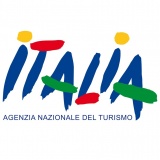
 italia.it
italia.it
Italian culture and history: Vicenza and the Palladian Villas
- WTI Magazine #137 Mar 20, 2021
-

 italia.it
italia.it
Vicenza, a city to live in its every detail, to discover street by street, to admire from the very first moment. It is one of the most beautiful places in Veneto and in all of Italy, where architecture happily marries with city planning: palazzi, villas, monuments and churches contribute to the harmonious splendor that form this city.
Vicenza possesses two criteria that were important in putting it on the map- that is, on UNESCO’s World Heritage List (1994): Palladio’s contribution to its art history; and its perfect integration of architectonic works with urban spaces, thus making it a model and significant reference for all of modern and contemporary Europe.
Vicenza charms for the sophistication of its forms and proportions. Founded between the 6th and 7th Centuries B.C., the city bears a history interwoven with that of the Most Serene Republic of Venice, its ruler from 1404 until the end of the 18th Century.
In the 1500s, the grand Palladio made himself known to the entire world by leaving a vast legacy to Vicenza that included the Palladian Basilica, Palazzo Chiericati, and the Teatro Olimpico; they are the highest expressions of the master’s artistic genius.
“It is impossibile to describe the effect Palladio’s Basilica has on one…” attested Goether after admiring the city’s most talked-about monument. The Basilica stands in Piazza dei Signori; it was reconstructed in 1614 according to Palladian ideals.
Beyond the villas designed for the aristocracy in those days (Palazzo Valmarana; Palazzo Barbaran da Porto, seat of the Museo Palladio; Palazzo Schio), other important works abound, such as the Cathedral and rather sophisticated public architecture, in particular the monumental Arco delle Scalette and the loggia of the Palazzo della Ragione.
After the original UNESCO recognition of 1994, 24 other Palladian villas were included as part of the Site two years later: these villas dot the countrysides surrounding some of the smaller towns of the Region of Veneto.
Extraordinary homes built for noble families (i.e. Barbato, Corner, Emo, Grimani and Foscari), they immediately became architectural icons whose influence reached far outside Italy.
Although it almost goes without mentioning, the Villa Almerico Capra, also commonly referred to as the Villa Rotonda, should be THE primary stop on a “Palladian villas” itinerary. It is, after all, one of the most celebrated structures in modern architectonic history.
Elegance and form blend with function in each of these magnificent noble residences that feature agricultural annexes, and cultivated fields and vineyards. They are complete with stalls, storage areas, and spaces for peasants and field hands.
Curiosities
The tomb of Luigi Da Porto – author of the novella Giulietta e Romeo, Shakespeare’s inspiration for his own rendition on the tragic love story – resides inside the Church of the Holy Crown (Santa Corona).
Several films have been made in Vicenza and its Province: among them are The Merchant of Venice, filmed in Thiene’s Castello Colleoni; and Il commune senso del pudore, a film from 1976 featuring beloved Italian actor Alberto Sordi.
Vicenza also preserves traces of significant Roman-era constructions: the Cryptoporticus, floor mosaics, bridges, the Lobia Aqueduct, and the Theatre in Berga.